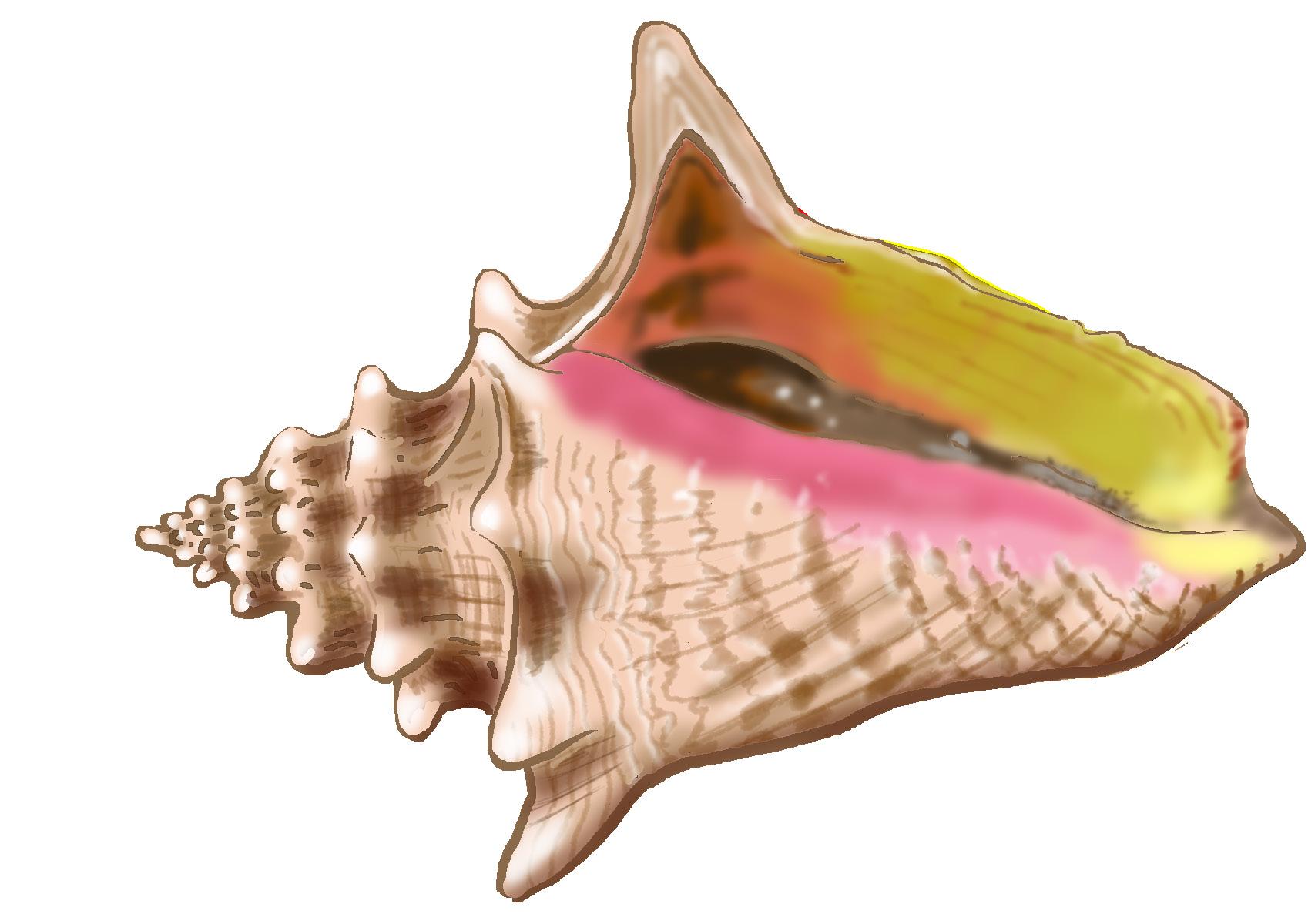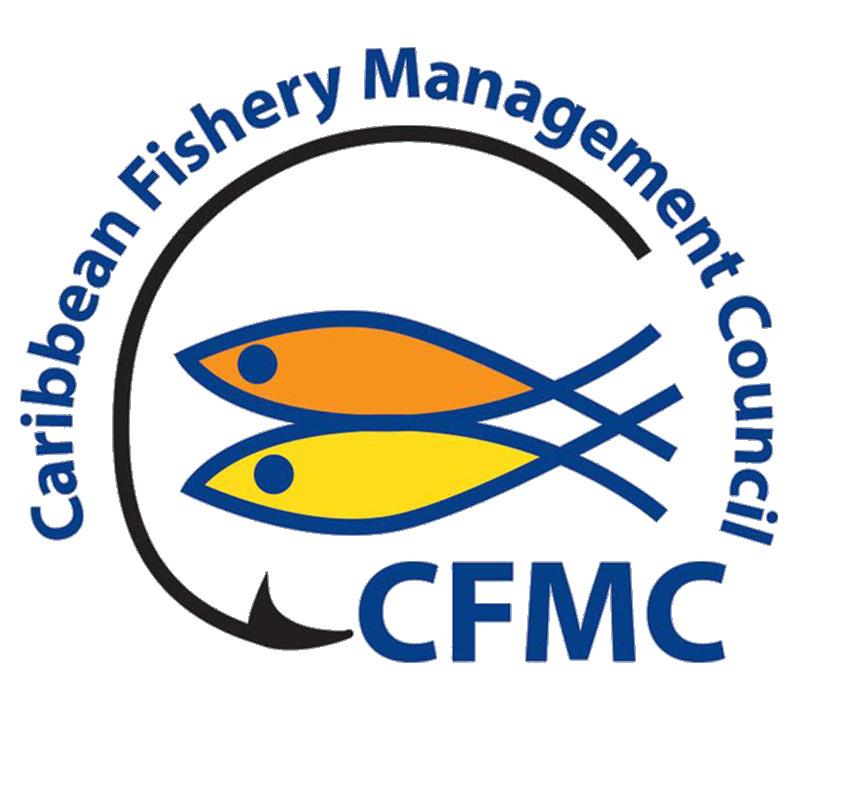Aliger gigas
The queen conch is a marine gastropod mollusk of the family Strombidae. It is a uniquely beautiful large conch of valuable economic importance in Puerto Rico and the U.S. Virgin Islands, as well as in the rest of the Caribbean. Adults live on seagrass and seaweed meadows, with calcareous sand bottoms, and feed on macroalgae and the film that covers seagrasses, and also feed on diatoms and cyanobacteria associated with detritus. Aliger gigas inhabits the tropical western Atlantic region and is distributed across three marine biogeographic provinces, from Bermuda to the northern shelf of Brazil. It is an endemic species of the region, but, unfortunately, it has been overfished and shows a clear deterioration and depletion as a natural resource in many countries.
En el carrucho, los sexos están separados y no existe dimorfismo externo en la concha entre los sexos. Sin embargo, las diferencias sexuales se distinguen claramente cuando observamos las partes blandas del animal.
In the queen conch, the sexes are separate, and there is no external dimorphism in the shell between the sexes. However, sex differences are clearly distinguished when we observe the soft parts of the animal.
En la etapa epibéntica (1-3 años), los juveniles (de más de 60 mm) viven en la superficie del fondo y aún mantienen el labio de la concha sin engrosar. Tienden a migrar hacia áreas más profundas. In the epibenthic stage (1-3 years), juveniles (over 60 mm) live on the bottom surface and still maintain an unthickened shell lip. They tend to migrate to deeper areas.
Comparación de las conchas adultas de los estrómbidos presentes en Puerto Rico y las Islas Vírgenes Estadounidenses.
Comparison of adult shells of strombids present in Puerto Rico and the U.S. Virgin Islands.
Probóscide
La hembra deposita una hebra tubular continua que puede medir más de 37 metros, no obstante, según la va produciendo, la dobla sobre sí misma hasta formar una masa compacta. La hembra puede desovar hasta 20 veces durante una temporada reproductiva anual. Esta masa ovígera tiene forma arqueada y se asienta sobre la arena. Debido a que la hebra es pegajosa los granos de arena se adhieren a ella, formando una capa de arena que la camufla. La puesta puede contener desde 300,000 - 700,000 huevos, con un máximo de sobre un millón de huevos.
A female lays an egg mass consisting of a single continuous tubular strand that can reach over 37 meters, however, as she produces it, it is folded back and forth upon itself, ensuing a compact egg mass. The female can spawn up to 20 times during the annual reproductive season. This ovigerous mass has an arched shape and sits atop the sand. The strand is sticky and sand grains adhere to it, resulting in a covering of sand which camouflages it. A spawn can contain from 300,000 - 700,000 eggs, with a maximum of over a million eggs.
Varios son los depredadores naturales del carrucho, entre estos, gasterópodos, el pulpo común, crustáceos, tiburones, varias especies de peces óseos y la tortuga cabezona. De todos los depredadores conocidos, los humanos constituyen la principal amenaza del carrucho en todo su rango de distribución.
La madurez sexual se alcanza entre los 4 y 5 años de edad, después de que el labio está completamente acampanado y tiene un grosor de 7 mm o más. La maduración del animal concurre con una amplia gama de tamaños de la concha, típicamente entre 170 y 240 mm. La fecundación es interna, pero el desarrollo embrionario ocurre fuera de la hembra. Generalmente, el apareamiento y el desove ocurren durante los meses más cálidos del año, si bien pueden extenderse durante todo el año. Cuando los individuos están listos para aparearse migran hacia fondos más llanos, con arenas de coral limpias. Durante la cópula, el macho extiende la verga hasta el órgano receptor de la hembra (bursa copulatrix) y deposita los espermatozoides que fecundarán los huevos.
Sexual maturity is reached between 4 and 5 years of age, after the lip is completely flared and has a thickness of 7 mm or more. Conch can mature over a broad range of shell lenghts, typically 170-240 mm. Fertilization is internal, but embryonic development occurs outside of the female. Mating and spawning generally happen during the warmest months of the year, although they can extend throughout the year. When individuals are ready to mate, they migrate to shallower areas with clean coral sands. During copulation, the male extends its verge to the receiving organ of the female (bursa copulatrix) and deposits the sperm that will fertilize the eggs.
La mayoría de las especies de carruchos de nuestra región han sido reclasificadas varias veces, cambiando el nombre del género. Sin embargo, la identidad biológica de dichas especies es la misma. El carrucho, antes llamado Strombus gigas, después Eustrombus gigas y Lobatus gigas, hoy se conoce con el nombre Aliger gigas por los científicos.
Most of the strombid species in our region have been reclassified several times, changing the name of the genus. However, the biological identity of these species is the same. The queen conch, formerly called Strombus gigas, later Eustrombus gigas and Lobatus gigas, today is known by scientists as Aliger gigas.
Several animals prey on the queen conch, among these, gastropods, the common octopus, crustaceans, sharks, various species of bony fishes, and the loggerhead sea turtle. Of all the predators known, humans constitute the major continuous threat to the queen conch throughout its distribution range.
La pesca y el aprovechamiento material del carrucho tienen profundas raíces históricas y etnoculturales entre los habitantes del Caribe. La carne del carrucho se ha utilizado para el consumo humano o como cebo de pesca. El casco (la concha) se ha empleado para preparar anzuelos y elaborar herramientas, para producir materiales de construcción y utensilios de cocina, para crear artículos de artesanía y joyería e instrumentos musicales. Además, las perlas del carrucho son muy valiosas. En varias islas del Caribe, el consumo de la carne del carrucho se ha expandido y ha adquirido mayor importancia comercial local. Otras islas destinan la carne para que se utilice como un producto convertible en divisa para el intercambio comercial y la exportación a nivel internacional.
Fishing and the material versatility of the queen conch have deep historical and ethnocultural roots among the inhabitants of the Caribbean. Conch meat has been used for human consumption or as fishing bait. The shell has been used to prepare
Aliger gigas recibe otros nombres comunes a lo largo de su ámbito de distribución: botuto, caracol rosado, caracol pala, caracol reina, cobo, lambí, queen conch y pink conch, entre otros.
Aliger gigas receives other common names throughout its range: botuto, caracol rosado, caracol pala, caracol reina, cobo, lambí, queen conch and pink conch, among others.
Apareamiento
Adultos Adults






